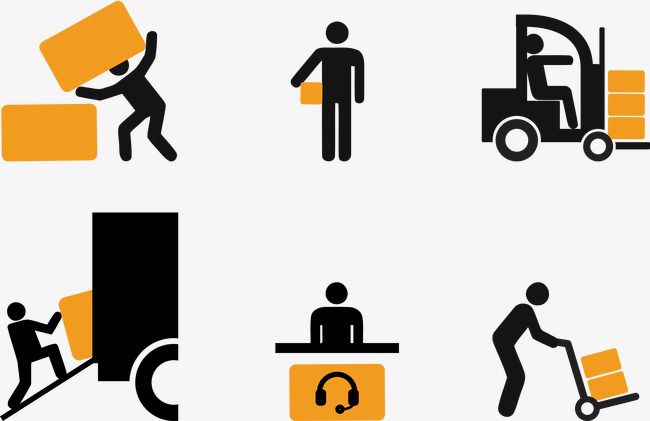Trade shows require a great deal of pre-planning and coordination. This includes the shipping of the items and materials you need to have a successful trade show. In the months preceding the trade show, there will be deadlines to meet. As the date gets closer, exhibits, samples, marketing material and supplies will need to be sent to the venue.
After the show, there are many cases where companies are surprised by several “material handling” or “drayage” fees. This year, don’t let material handling fees for your exhibit stress you out. Let’s talk about what material handling is and how you can mitigate costs associated with this necessary aspect of any trade show.
What is Material Handling?
Material handling is also known as drayage. To put it simply, it’s the cost of moving your items from one location to another (such as a truck to the warehouse and exhibit hall), and the cost of storing your items until you use them. This is a cost charged by the show runners.
Unfortunately, material handling fees are non-negotiable. If you don’t pay for it, your exhibit will sit until it’s either lost or stolen. Therefore, it’s extremely important that you don’t avoid paying these fees. And although you might think this charge is a “surprise,” check your contract to confirm exactly what you’ll be expected to pay for. This can most commonly be found in the show decorator’s exhibitor kit.
Why is Material Handling So Costly?
It never fails – drayage fees are a surprise.
But why? Why can fees reach into the thousands?
Well, it comes down to a few factors. First, the weight of your packages is a big factor. Weight for your items are calculated in CWT. CWT stands for hundredweight. That means your shipment is measured in increments of 100 pounds. Unfortunately, that means it’s possible to incur high material handling fees.
Second, the weight factor is compounded when you send your items in multiple boxes. By keeping weight light and bundled together, you are charged less.
Also, show contractors can charge higher fees for shipping containers that are not standard sizes. Double check the exhibitor kit to confirm the standard rates, and what constitutes a standard package. It is also smart to confirm with your exhibit company if they are using standard crate sizes for your property. A slight difference can move a container into oversized a quickly blow your budget.
Lastly, late fees. Knowing your deadlines is the key to saving money. If you don’t already, each trade show you have, should be tracked in a spreadsheet, document or calendar. We understand attending many (or even one) trade show per year is hectic. That’s why being organized is important. Once you receive your vendor contract, it’s imperative that you keep your deadlines in mind to prevent late fee charges.
6 Tips to Reduce Material Handling Costs
1. Keep it light!
Try to keep your shipment as light as possible. That means ensuring your exhibit booth, supplies and extras are packed neatly. Thankfully, design trends are making this part easy. Aluminum, fabric and other materials for trade show exhibits help keeps weight down. Be sure to work with an exhibit company that optimizes their designs to keep material handling fees low.
2. Keep it simple.
Keep your list of supplies needed short. Also, find opportunities to source items in the location of the show. Need packing materials? See if there’s an office supply or major shipping retailer nearby (if your show is in a large conventions center, there probably is). This way, you don’t have to spend extra money to ship disposable items.
3. Ship with care.
What can you take in your luggage and what do you HAVE to ship to the venue? Think about it. And keep any unnecessary items from making the trip altogether. Making a trade show supply list assists with this process and helps you eliminate items you find unnecessary as time goes on.
4. Consolidate as much as you can.
Again, one of the biggest costs incurred in material handling fees are due to too many packages. There are often minimum shipping charges for every item. Therefore, it behooves you to consolidate. You want to take as few packages as necessary. Cleverly pack your items to achieve this. Fill small spaces with miscellaneous supplies like packs of pens, scratch paper and business cards.
5. Mind the time.
Once you sign your contract, the time starts ticking! Set reminders for yourself about shipping deadlines to avoid the costs of late fees. If you fail to get your items to the carrier by the deadline, you will incur penalties.
6. Verify everything.
Although material handling is a necessary cost, people make mistakes. Be sure to review all your receipts in case a mistake was made. Verify the bill of lading (BOL) and weights measured to make sure they match your numbers. It’s easy to leave money on the table if you’re not paying attention.
Final Thoughts on Material Handling Fees
Don’t blow your budget on “surprise” material handling fees. If you read the fine print, prepare well, and ship smart, you will keep spending to a minimum.
It’s our experience that with every trade show, our customers get smarter about logistics. There is so much going on in preparation for a trade show, streamlining your shipping processes gives you more time to focus on what you do best: interacting with customers. If you have questions or concerns about your logistics or material handling fees, reach out to our team.

